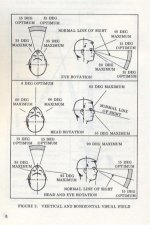The conversion of figures into something meaningful happens every time any optic is tested on an interferometer, thats what an interferometer does. It gives values to all the aberrations it tests for and then gives an RMS figure for the optic. The meaning is how the aberrations affect the image. That comes from a knowledge of what the aberrations are and what affect they have. Testbench testing and how the results correspond to performance is all very well known and practised in every professional optical shop virtually every day.
Andy,
I think you were responding to Leif in this quote, but the same basic theme comes through several posts (which I seriously enjoy reading). The theme seems to be that interferometer analysis potentially (if not actually) says everything one needs to know about the optics. Apparently, it can determine all the third-order aberrations (or higher), assembly errors, glare resistance, and so forth — to a gnat's eyelash or better.
A moment's reflection will show, however, that such results must constitute a multi-dimensional description of the optic under evaluation, the dimensions being the separate aberrations, assembly errors, environmental conditions, etc. We also know, however, that: (a) many of the dimensions are not physically/optically
independent of one other, and (b) decisions were made by some designer or design team to stress or suppress certain dimensions in favor of others. We generally refer to these as "tradeoffs." Third order Seidel aberrations, for instance, can not all be eliminated simultaneously, so the question switches to the balance of aberrations as opposed to their presence.
It's generally understood that the design process involves contending with these tradeoff decisions, and the most important factors entering into the process ultimately involve the user population. The most salient of these is probably the acuity of the eye, but, even this must be put into context. Is it day or night, pod mounted or hand held, and exactly what is the observer expected to be doing, e.g., finding enemy troops on the battlefield or birds in the foliage? Each task condition defines its own optimum optics, and these optima (plural), in turn, relate back to the multi-dimensional response surface that is measurable with an interferometer, or related equipment, on a stark lab table.
What can't be determined on an optical bench, are these performance optima. They must be provided from the outside, specifically by the people who will use the equipment for various tasks or task combinations. But how will they do that? The easiest way is by expressing
subjective opinions about how well a given optical design suits their needs. Function trumps form. These opinions can be validated (objectified) through expensive behavioral studies, but not on an equally expensive optical bench.
So, as I see it, the reason why
subjective evaluations and descriptions are
essential is that users who perform similar tasks, such as particular types of birding or astronomy, or hunting, can communicate efficiently without first understanding the myriad of pscho-physical functions relating the physics of their optics to the desired performance characteristics (that is, if anyone knew them). Steve Ingraham coined the phrase a "Better View Desired," I'm inclined to think, to emphasize that the ultimate criterion is the human one, i.e., the better "view," not the better optic.
I'm sure you realize these comments are only intended to enliven the discussion.
Blue skies, and HNY,
Elk





